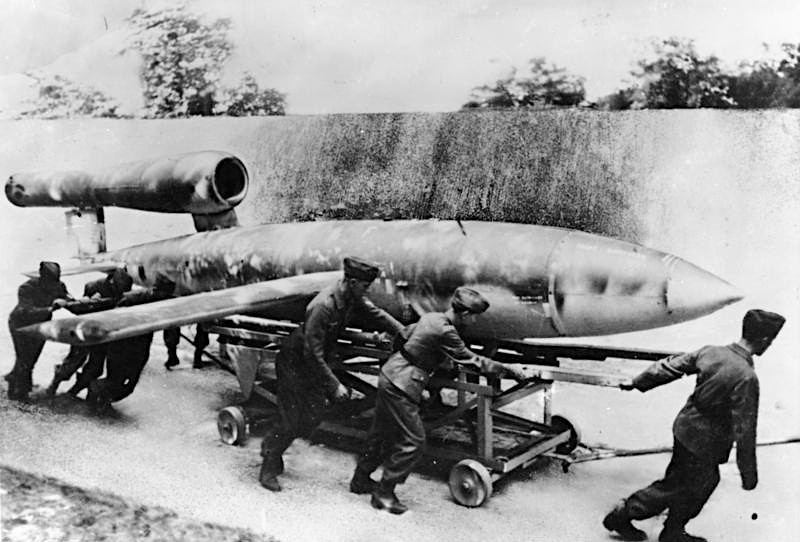The women who softened the V-1 terror attacks

A German crew rolls out a V-1. (Bundesarchiv, Bild 146-1973-029A-24A / Lysiak)
SUMMARY
We've talked before about the huge impact of tiny electronics on World War II. Dr. James Van Allen finalized a working design for the proximity fuze and gave American service members a massive advantage. Sailors in the Pacific soon became more deadly against Japanese pilots and used up less ammo.
But, while America kept the secret of the new ammo closely held, it did share with at least one ally. Women in Great Britain assembled the tiny fuzes and helped tip the Battle of Britain away from Germany. Later, their fuzes saw service over the Atlantic and in the Battle of the Bulge.
The proximity fuze
Many countries realized the potential of a fuze that set off an explosive a certain distance from targets. At the start of World War II, the best anyone could do was create a timed fuze that operated predictably. Gunners set the timers for the weapon to go off at a certain altitude, then fired them at clouds of attacking planes.
The method left a lot to be desired. Forces couldn't reliably estimate enemy aircraft altitudes before radar. And the timing necessary to detonate at a certain altitude changed as aircraft got closer to a ship, meaning a perfect setting to kill planes changed every few seconds in combat.
A proximity fuze, meanwhile, would always go off a certain distance from the targeted aircraft. That meant it could be set to detonate as it entered the range necessary for its shrapnel to kill enemy planes and pilots.
And in the early days of World War II, Dr. James Van Allen got a design to work. His design failed 50% of the time, but that was still much better than timed fuzes. And with all the delicate electronics being launched on top of a bomb, 50% is pretty impressive.
The tech goes to England
Just like England sent some of its top technology to America before Pearl Harbor, America started sharing its secrets with Britain. And one of them was the proximity fuze.
For a country under constant attack by the Luftwaffe and V-1 flying bombs, a proximity fuze was a game changer. The electronics company Sylvana manufactured the delicate components and then women assembled them by hand. One group of women in Ipswich created the small devices.
According to the HistoricIpswich.net:
When German forces began systematically destroying London in 1944 with V-1 rockets, the technology was shared with Britain, and by the final day of Germany’s 80-day attack, only 4 of 104 bombs succeeded in reaching their target.
Now, the proximity fuze serves in militaries across the world. And weapons perform better with it than without. Even operators of the vaunted Stinger missile saw it as an upgrade.
SHARE
